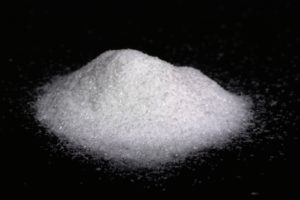 One of the dreaded afflictions of getting older is age-related macular degeneration (AMD), which is a leading cause of vision loss in Americans 60 years and older. It has no cure. Thus this study finding that eating a Mediterranean diet, and especially lots of fruit, was associated with a lower risk of macular degeneration was welcome news. They also found a protective effect from drinking caffeinated beverages - about 78 mg of caffeine per day (about one cup of coffee or one shot of espresso). A Mediterranean diet stresses eating fruits, vegetables, nuts, whole grains, legumes, fish, seeds, and olive oil. From Science Daily:
One of the dreaded afflictions of getting older is age-related macular degeneration (AMD), which is a leading cause of vision loss in Americans 60 years and older. It has no cure. Thus this study finding that eating a Mediterranean diet, and especially lots of fruit, was associated with a lower risk of macular degeneration was welcome news. They also found a protective effect from drinking caffeinated beverages - about 78 mg of caffeine per day (about one cup of coffee or one shot of espresso). A Mediterranean diet stresses eating fruits, vegetables, nuts, whole grains, legumes, fish, seeds, and olive oil. From Science Daily:
People who closely follow the Mediterranean diet -- especially by eating fruit -- may be more than a third less likely to develop age-related macular degeneration, a leading cause of blindness, according to a study presented at AAO 2016, the 120th annual meeting of the American Academy of Ophthalmology. The study is the first to identify that caffeine may be especially protective against AMD.
Many studies have confirmed the health benefits of the Mediterranean diet, which emphasizes eating fruits, vegetables, whole grains, legumes, nuts, healthy fats and fish, and limiting red meat and butter. The diet has been shown to improve heart health and reduced risk of cancer, but there has been little research on whether its benefits can extend to eye disease. To determine this, researchers studied a Portuguese population to see whether adherence to the diet impacted people's risk of AMD. Their findings revealed a significant reduction in risk in those who ate a Mediterranean diet most frequently, and particularly among those who consumed more fruit and caffeine.
Researchers at the University of Coimbra in Portugal studied 883 people age 55 or older in the central region of the country between 2013 and 2015. Of those, 449 had AMD in its early stages before vision loss, and 434 did not have AMD. Researchers assessed their diets based on a questionnaire asking how often they ate foods associated with the Mediterranean diet. The more they ate foods associated with the diet, the higher the score, from 0-9. Those who closely followed the diet scored a 6 or greater. Their findings were as follows:
Higher diet adherence scores meant lower AMD risk Of those who did not closely follow the diet (scored below a 6), 50 percent had AMD. Of those who did closely follow the diet (scored 6 or above), only 39 percent had AMD. This represents a 35 percent lower risk compared to those who did not adhere to the diet.
Fruits were especially beneficial Researchers analyzed consumption of foods and found that people who consumed higher levels of fruit were significantly less likely to have AMD. Of those who consumed 150 grams (about five ounces) or more of fruit a day: 54.5 percent did not have AMD and 45.5 percent had AMD. Overall, people who ate that much fruit or more each day were almost 15 percent less likely to have AMD, based on an odds ratio calculation.
Caffeine and antioxidants also were protective Researchers used a computer program to analyze the participants' consumption of micronutrients, according to their answers on the questionnaire. They found higher consumption of antioxidants such as caffeine, beta-carotene and vitamins C and E was protective against AMD. Of those who consumed high levels of caffeine (about 78 mg a day, or the equivalent of one shot of espresso): 54.4 percent did not have AMD and 45.1 percent had AMD....The researchers opted to look at caffeine because it is a powerful antioxidant that is known to be protective against other conditions, such as Alzheimer's disease.

 Once again, research shows that a
Once again, research shows that a  Recent research examined levels of endocrine disruptors called phthalates in people eating fast food. Researchers found evidence of a dose–response relationship between fast food intake and exposure to phthalates - the more one eats fast food, the more phthalates (actually metabolites of the phthalates) can be measured in the person's urine. Fast food consumers had higher urinary levels of the phthalates DEHP, DiNP, and BPA than those not consuming fast food (even though the differences in levels of BPA among groups were "non-significant"). This is of concern because these endocrine disruptors are linked to a
Recent research examined levels of endocrine disruptors called phthalates in people eating fast food. Researchers found evidence of a dose–response relationship between fast food intake and exposure to phthalates - the more one eats fast food, the more phthalates (actually metabolites of the phthalates) can be measured in the person's urine. Fast food consumers had higher urinary levels of the phthalates DEHP, DiNP, and BPA than those not consuming fast food (even though the differences in levels of BPA among groups were "non-significant"). This is of concern because these endocrine disruptors are linked to a  Monosodium glutamate is an additive used as a "flavor enhancer" that has long been used in foods (processed and packaged foods, as well as fast food and restaurant meals) - and it has also been controversial for decades. Even four decades ago some people complained of headaches after having foods with added monosodium glutamate, and since then health complaints have just increased. Since so much is still unknown about the health effects of additives commonly added to foods, then many people just want to avoid them. But it's tricky because manufacturers sneak monosodium glutamate into foods using various other name such as hydrolyzed vegetable protein, autolyzed yeast, glutamic acid, and yeast extract.
Monosodium glutamate is an additive used as a "flavor enhancer" that has long been used in foods (processed and packaged foods, as well as fast food and restaurant meals) - and it has also been controversial for decades. Even four decades ago some people complained of headaches after having foods with added monosodium glutamate, and since then health complaints have just increased. Since so much is still unknown about the health effects of additives commonly added to foods, then many people just want to avoid them. But it's tricky because manufacturers sneak monosodium glutamate into foods using various other name such as hydrolyzed vegetable protein, autolyzed yeast, glutamic acid, and yeast extract. The spice turmeric is very popular these days, especially because studies link it to various health benefits. But is this true? Is it better to eat turmeric in foods or take it in pill form as a supplement? Today's post is about a study that was done by the BBC teaming up with researchers at Newcastle University (in the UK) where they looked at whether modest doses of turmeric had health benefits when ingested daily for 6 weeks. Specifically, they looked at what turmeric does to various blood markers thought to be associated with inflammation and changes that could eventually lead to the onset of cancer. It is currently thought that many or turmeric's supposed health benefits come from the compound curcumin found in it.
The spice turmeric is very popular these days, especially because studies link it to various health benefits. But is this true? Is it better to eat turmeric in foods or take it in pill form as a supplement? Today's post is about a study that was done by the BBC teaming up with researchers at Newcastle University (in the UK) where they looked at whether modest doses of turmeric had health benefits when ingested daily for 6 weeks. Specifically, they looked at what turmeric does to various blood markers thought to be associated with inflammation and changes that could eventually lead to the onset of cancer. It is currently thought that many or turmeric's supposed health benefits come from the compound curcumin found in it. A new study conducted in China found an association between low vitamin D levels and future cognitive decline in older adults. The lower the vitamin D levels at the initial screening (the baseline), the more people with cognitive decline at a 2 year follow-up. There were were no gender differences. (
A new study conducted in China found an association between low vitamin D levels and future cognitive decline in older adults. The lower the vitamin D levels at the initial screening (the baseline), the more people with cognitive decline at a 2 year follow-up. There were were no gender differences. ( Can eating a vegetarian diet lower blood pressure? Both this review and other reviews of studies say YES, that those following vegetarian diets have a lower prevalence of hypertension. Overall, the mean prevalence of hypertension was 21% in those consuming a vegetarian diet and 29% in those consuming a nonvegetarian diet (the differences varied between studies).Those following a vegetarian diet also tended to have a healthier lifestyle. As the researchers point out: blood pressure medicine lowers blood pressure for one day, while lifestyle changes (diet, exercise, not smoking, limiting or avoiding alcohol) can lower blood pressure for life.
Can eating a vegetarian diet lower blood pressure? Both this review and other reviews of studies say YES, that those following vegetarian diets have a lower prevalence of hypertension. Overall, the mean prevalence of hypertension was 21% in those consuming a vegetarian diet and 29% in those consuming a nonvegetarian diet (the differences varied between studies).Those following a vegetarian diet also tended to have a healthier lifestyle. As the researchers point out: blood pressure medicine lowers blood pressure for one day, while lifestyle changes (diet, exercise, not smoking, limiting or avoiding alcohol) can lower blood pressure for life. Yes! Treating young children who have peanut allergies with doses of
Yes! Treating young children who have peanut allergies with doses of